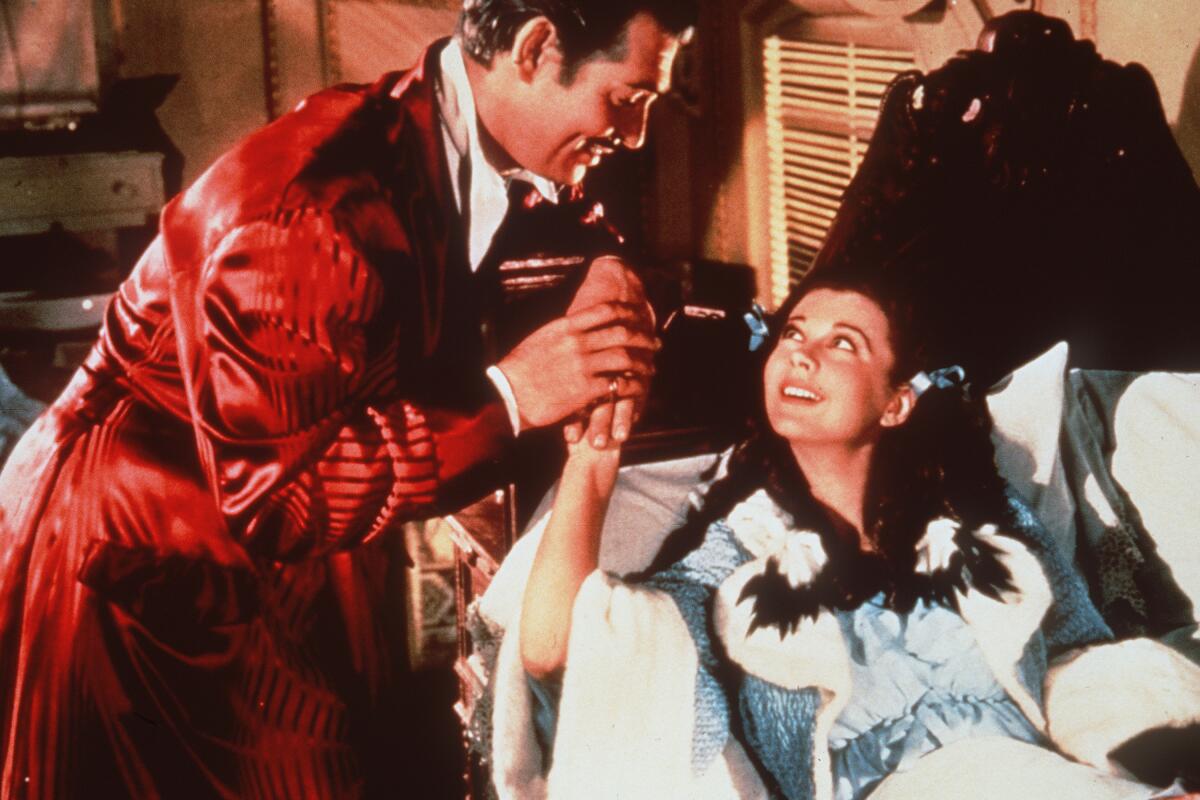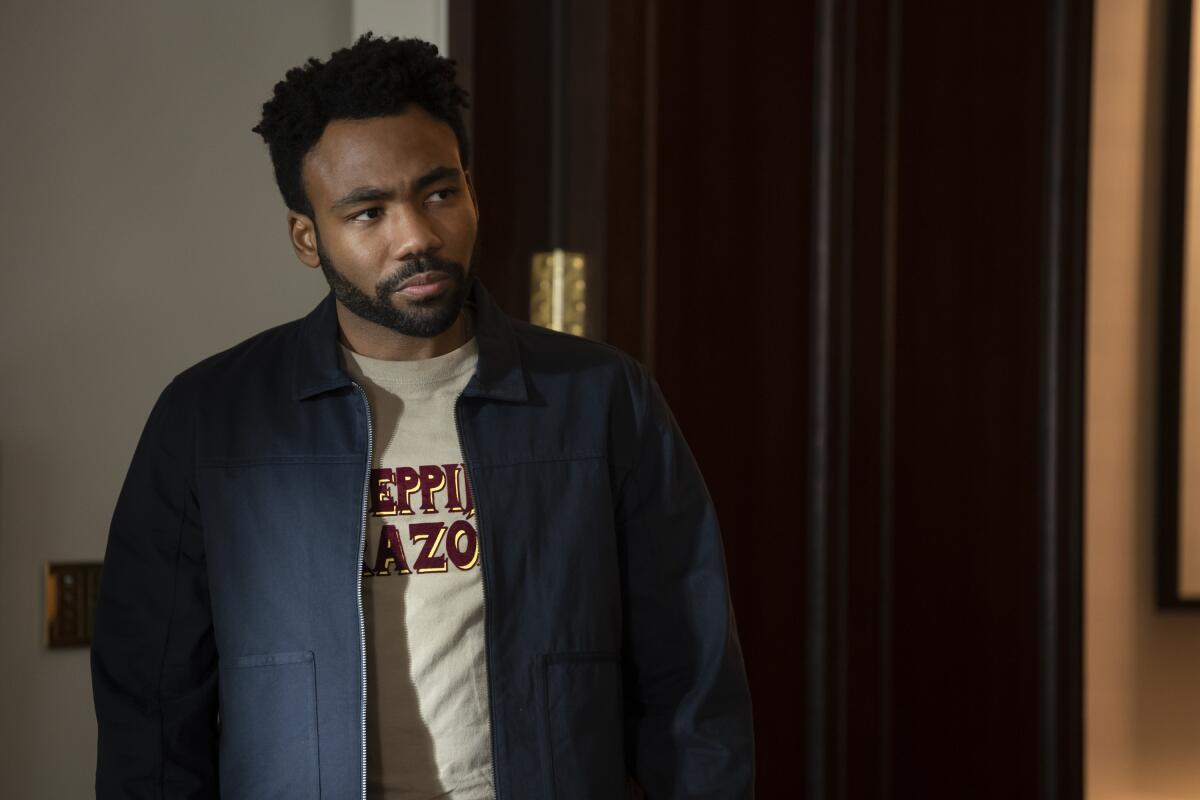I was watching some episodes of a television show, which shall remain nameless if only because I can’t remember the name, and was more than usually struck by the thought that if it were only half as long it would have been twice as good. The plot and the performers drowned in what someone had deemed the necessity of filling 10 hours of streaming television.
This observation is not unique to that series, whatever it was. Every television critic currently writing surely has had the occasion to call a series too long, even in a largely positive review. “Netflix bloat” was the term going around for awhile to describe a situation, specific to the streaming, serial age, where the number of episodes a show lasts is determined not by the demands of the material but by some a priori executive calculation ultimately translating to dollars — in the pocket of the network or the creators or to give the impression to subscribers that they’re getting value for money. But a show that tells its story over eight or 10 episodes, just to fill that space, can go off the rails with unnecessary side plots or flashbacks or anticlimactic pacing. More can be less.
In related news, “Ted Lasso” is reportedly gearing up for a fourth season, even though it neatly concluded its business with the third.
This all got me thinking about the long and short of television and other things.

Brett Goldstein, Brendan Hunt and Jason Sudeikis in Season 3 of “Ted Lasso,” which many thought ended after three seasons, but may return for a fourth.
(Apple TV+)
Time, Einstein taught us, is relative. It passes slowly, or it flies. All performing arts exist in time. They stretch or compress it. Chopin wrote a “Minute Waltz”; an ongoing performance of John Cage’s “ORGAN2/ASLSP (As Slow as Possible),” which began in 2001 on a church organ in Halberstad, Germany, is expected to end in 2640. Sandbags hold down the organ pedals, but humans have played the piece in performances ranging from 12 to 24 hours.
Things that run long — what many would call too long — can be worth the time when the intent is clear. Whether one mucks in for the full ride or just appreciates the concept, duration is part of the art. Andy Warhol’s “Empire” is an eight-hour film of the Empire State Building whose purpose is “to see time go by.” Christian Marclay’s “Clock,” a 24-hour montage of clocks and watches clipped from TV shows and movies, which has been shown at LACMA, is synced to the real time in which it’s shown. In the theater, we find the Royal Shakespeare Company’s eight-hour production of “The Life and Adventures of Nicholas Nickleby” — saw it, it was great — and Peter Brook’s nine-hour production of Jean-Claude Carrière‘s “The Mahabharata.” Thomas Jolly, the artistic director of this year’s Olympics opening and closing ceremonies, staged a 24-hour cycle of Shakespeare’s “Henry VI” and “Richard III” plays (there were pillows for nappers).
These works are designed to be inhabited as much as consumed. Robert Wilson, whose productions are unparalleled in their time-stretching stillness, is a master of the very long form. “Einstein on the Beach,” Wilson’s non-narrative opera with Philip Glass, runs five hours. His 1972 “KA MOUNTAIN AND GUARDenia TERRACE: a story about a family and some people changing” went on continuously for seven days. “One could see the work at 8 a.m., 3 p.m., or midnight,” Wilson wrote, “and the play would always be there…. It would be a bit like going to a park where you could daydream, watch clouds change, observe people passing, and even read a book, then suddenly there would appear a prepared stage work combining the real with the surreal.”

The Los Angeles Opera’s presentation of Philip Glass’ “Einstein on the Beach” in 2013. The opera is roughly five hours long.
(Lawrence K. Ho / Los Angeles Times)
Art is shaped by the technology that delivers it. The amount of time you could fit comfortably on one side of a 78 or 45 rpm record put an upward cap on the length of a pop song, which became the radio standard; when Bob Dylan’s “Like a Rolling Stone” forced its way onto AM radio, it was a revolutionary moment. LPs gave artists room to expand and explore — 23 minutes of the Grateful Dead’s “Dark Star,” for example, whose majesty was not unrelated to its length. When Dylan released the 16-minute “Highlands” in 1997, it was greeted as the seal on his creative comeback.
When CDs arrived, they could hold 74 minutes of music, nearly twice as much as a typical vinyl LP, and for a while, artists felt that not to fill them up with material was somehow cheating their fans — songs that might have otherwise been left off, not necessarily for the worse, were put on. Sequencing went out the window; tracks at the end of a disc might rarely be heard. Most artists eventually backed off from this madness, even before CDs went out of style and LPs went back in.
Historically, a feature film ran typically between 90 and 120 minutes, because film is expensive and theater owners reckoned their profits on how many times a movie could be shown in a day. There were exceptions — films whose very length asserted their importance, going back nearly a century to D.W. Griffith’s three and a half hour “Intolerance.” “Gone with the Wind” lasted nearly four hours, as would such later temporal blockbusters as “Lawrence of Arabia” and “It’s a Mad, Mad, Mad, Mad World,” with an intermission. Martin Scorsese hasn’t made a movie lasting less than three hours since “Hugo,” apart from “The Silence,” which clocks in at a mere two hours and 41 minutes. (“Taxi Driver,” by contrast, runs 114 minutes.) Long can be good — “Seven Samurai,” “Children of Paradise,” — or much less good — most every modern superhero movie. But what cinephile wouldn’t trade a bag of gold to get a look at Erich Von Stroheim‘s original, lost nine-hour cut of “Greed?” (We will never know whether it was too long, or just right. Too short does not seem a possibility.)
1

2

1. Omar Sharif, left, and Peter O’Toole in the nearly four-hour long epic drama “Lawrence of Arabia.” (Columbia Pictures) 2. Clark Gable, left, and Vivien Leigh in “Gone with the Wind.” It also runs nearly four hours. (MGM/MGM)
To return to my sphere of professional interest: Linear television shows come in multiples of 30 minutes, arranged like Tetris blocks in a prime-time schedule, and in seasons of as many as 22 episodes. Episodes of streaming series, which tend to run six, eight or 10 to a season, can be just as long (or short) as necessary. U.K., imports like Ricky Gervais’ “The Office,” taught American creators the beauty of the six-episode comedy, now standard on cable and streaming platforms — though the domestic broadcast version of “The Office,” following an older model, packed in as many as 28 episodes into a year. Streaming dramas tend to tell serial stories lasting a season, like a very long movie chopped into bits. Episodic series, on the other hand, which make up most of what’s on broadcast television, may lack their grandeur, but they have the advantage of finishing a story at the end of an hour or half an hour. There’s no space to go astray; their energy is concentrated.
How long should a series itself run? In ad-supported linear television, the answer is as long as the ratings continue to make it attractive to advertisers, and in premium cable, the answer is as long as it remains attractive to subscribers. (Streaming platforms stay mum about their math, but it’s some combination of the two.) Some shows last into a period of diminishing returns — that dreadful term, “jumping the shark.” Some great ones have been axed after a single season: “Freaks and Geeks,” “Wonderfalls,” “The Middleman” and “Frank’s Place” are on my personal list of premature deaths. And yet, what they created in their time was just about perfect and, in their way, complete.
1

2

1. Donald Glover’s “Atlanta” wrapped after four season. (Rob Youngson/FX) 2. Devery Jacobs and Lane Factor in “Reservation Dogs,” which ended at three seasons. (Shane Brown/FX)
For streaming series, I’ve come to think that three or four seasons is ideal, enough time to create a world, explore its corners and move toward some sort of conclusion, but not so long that the writers have to reanimate the narrative with new arcs and characters. “Reservation Dogs,” one of the best shows of the 21st century, intentionally closed shop after its third season, as the equally fine “Atlanta” did after its fourth. I would expect “The Bear,” after its plot-light third season, to do the same. These are creative, not commercial decisions. When “The Dick Van Dyke Show” decided to close up shop after five highly rated years, Van Dyke told Life magazine, “We wanted to quit while we were still proud of it.” Jerry Seinfeld ended “Seinfeld” after nine seasons, even though the show was still a commercial powerhouse and the star was offered $5 million an episode to return for a tenth.
But if time is relative, so is taste. Like Einstein’s man on the train versus the man on the platform, it depends on where you stand. What you regard as too long might feel too short to me; what I regard as exactly enough might leave you wanting more. A four-hour Frederick Wiseman fly-on-the-wall documentary — last year’s “Menus-Plaisirs – Les Troisgros” most recently — is heaven; “Zach Snyder’s Justice League,” equally long, is hell. “Get Back,” Peter Jackson’s six-hour Beatles docuseries, is packed full of information, but Michael Lindsay-Hogg’s 80-minute “Let It Be,” from whose takes and outtakes Jackson’s is made, strikes me as the superior aesthetic experience.
Why might there be more “Ted Lasso” in our future? Money, sure. But people working together can create familial bonds; actors may like one another and the characters they play. They may want to play that music one more time, and perhaps another time, like Mick and Keith at 80, or Oasis in their 50s. Ultimately, there is no “should” to any of it. And who’s to say no when the answer might as easily be yes?

